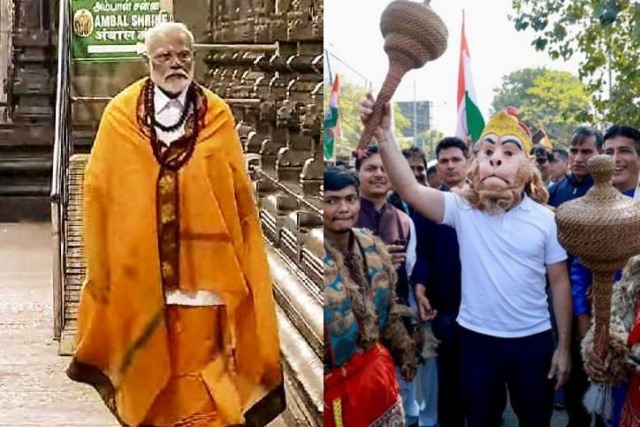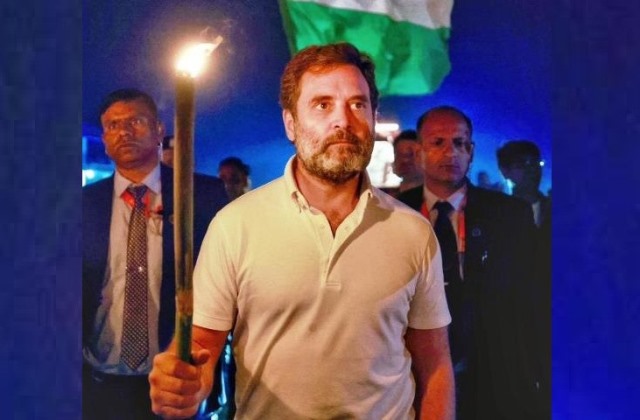When Rahul Gandhi, scion of the Congress Party’s most-dominant dynastic family, the Nehru-Gandhis, kicked off his new yatra or journey (he will cover 4,000 kilometres, partly on foot and partly by vehicles) last week, he carefully chose to start in Manipur, a north-eastern state that has been torn by violent ethnic clashes over the past eight months. The clashes are between the majority Meitei community and the minority Kuki community in which more than 200 people have been killed, women abused, and thousands displaced from their homes.
Yet, even as Manipur’s problems continue to simmer there has been inadequate effort by the Indian government to calm things down there and few central government leaders have showed up to express their concern and commitment to sorting things out in a state where an alliance of the Prime Minister’s Bharatiya Janata Party (BJP), the National People’s Party, Naga People’s Front, and the Lok Janshakti Party is in power since 2022.
Considering that, Gandhi’s choice of Manipur as the starting point for his Bharat Jodo Nyay Yatra (Unite Bharat Justice March), which follows last year’s Bharat Jodo Yatra, is an astute one. In his new yatra, he will go from East to West, cover 110 of India’s 543 parliamentary constituencies in 15 states, and finish in Mumbai in 66 days.
By then we will be well into the second half of March and there will be barely two months left for the 2024 parliamentary elections. Gandhi’s yatra is a crucial part of his party’s election campaign. After Manipur, towards last weekend, Gandhi hit Assam where at a temple, he wore a mask depicting the face of the Hindu god, Hanuman or Bajrang Bali and held aloft his hand Hanuman’s most familiar accessory, a battling mace.
On X, Gandhi has posted to say that his yatra or journey “is a balm of unity and love on the soul of India wounded by the Bharatiya Janata Party’s (BJP) politics of division and neglect”. It is really all about the elections. Gandhi and his party have been pulling out all the stops to try and reverse their dismal fortunes in India’s election–both at the parliamentary level as well as in the states. The desperation is understandable. It is part of the government in just three of India’s 28 states, while the BJP rules in 12 and is part of coalition governments in three.
The Congress and Gandhi are trying every trick in the book to try and fare better in next May’s parliamentary polls. With India in the throes of a massively orchestrated and feverish wave of Hinduism, which is the religion of 80% of Indians (1.12 billion people), the Congress has in recent times tried to display empathy towards the majority community. Gandhi’s Hanuman mask and mace waving; his visits to temples; quoting of religious texts and the Bhagavad Gita; and hob-nobbing with religious leaders of the Hindu faith are all the party’s way of trying to respond to the BJP’s pronounced emphasis in its politics on Hindutva and Hinduism.
Not to much avail, though. The Congress’ feeble attempts to consort with the religion of the majority in India will barely be noticed in the high-decibel, high-definition ramp up that is happening in the country. Even as you read this, the Shri Ram Janmabhoomi Temple will be formally opened by Prime Minister Narendra Modi. The frenzy over that carefully-timed event has been unprecedented. A huge ceremony will take place at the site of the temple in Ayodhya, in Uttar Pradesh, where it has been built on the site of the demolished Babri Masjid, a 16th century mosque, which sparked religious violence in 1992. The event is seen as a symbol of Hindu nationalist ambition and a source of anxiety for many Muslims in Ayodhya.
While massive security measures have been taken and special trains and choppers have been arranged for visitors, the fervour has also spread elsewhere. In India, several states have declared a holiday for schools; government offices will be partially shut. The event will also be livestreamed so Hindus across the country and elsewhere in the world can watch it. Indian embassies across the world and a sponsored screen at Times Square in New York will provide the live screening of the Ayodhya inauguration.
In the immediate run-up to this, we have seen viral social media posts that show Prime Minister Modi taking holy dips in the sea in southern India near a revered temple; and feed cows on the occasion of Makar Sankranti at his residence (the act is believed to yield benediction).
The extent of how much religion (read Hinduism) is embedded in the politics of Modi and his party (and by proxy the central government) is far greater than what those recent social media posts of the Prime Minister showed him doing before the temple’s inauguration. It is deep and inseparable.
Seen against that, what Congress may be doing to try and polish its Hindu credentials seem ineffective. Pathetic, even.
For the Congress and Gandhi, the Hindutva train left the station long ago. And they have missed it. The mask that Gandhi wore last week in Assam only made him look silly. But that’s a look that he seems to have perfected over the years.
Gandhi, who is 53, is what you would call a middle-aged politician although his party’s leaders (read loyal sycophants of the Nehru-Gandhi family) would insist that he is young. In the 20 years since he has been in active politics, if you look at it carefully, he hasn’t really achieved much. True, he has been elected to Parliament multiple times; and held official party positions, some of them reluctantly, but not much else. His election strategies have not worked; he has not been able to stem the tide of exodus from his party, particularly of talented and competent younger leaders who have usually left to join Modi’s BJP; and Gandhi’s speeches and pronouncements on politics, governance, and the economy have been of middling standards, quite often also demonstrating how embarrassingly naive and confused he can be.
Yet, Gandhi’s rallies and the yatras are well attended events. Crowds have been impressive at the public meetings he addresses; and when the yatras he does arrive at different cities and towns, thousands throng him. That, however, has not much to do with him as a politician but as a celebrity. It can seem most cynical to say this but Gandhi is half-Italian, and is nearly White–features that many Indians would describe as handsome (although I am not sure about that unkempt beard he grew last year)–and the crowds of people that gather at his rallies and meetings probably come to get a glimpse of him as they probably would have, had he been, say, a Bollywood actor. Not perhaps to hear what he says or with an intent to vote for him or his party. Entertainment and not elections are on their minds when they go to get a glimpse of him.
For more details visit us: https://lokmarg.com/

